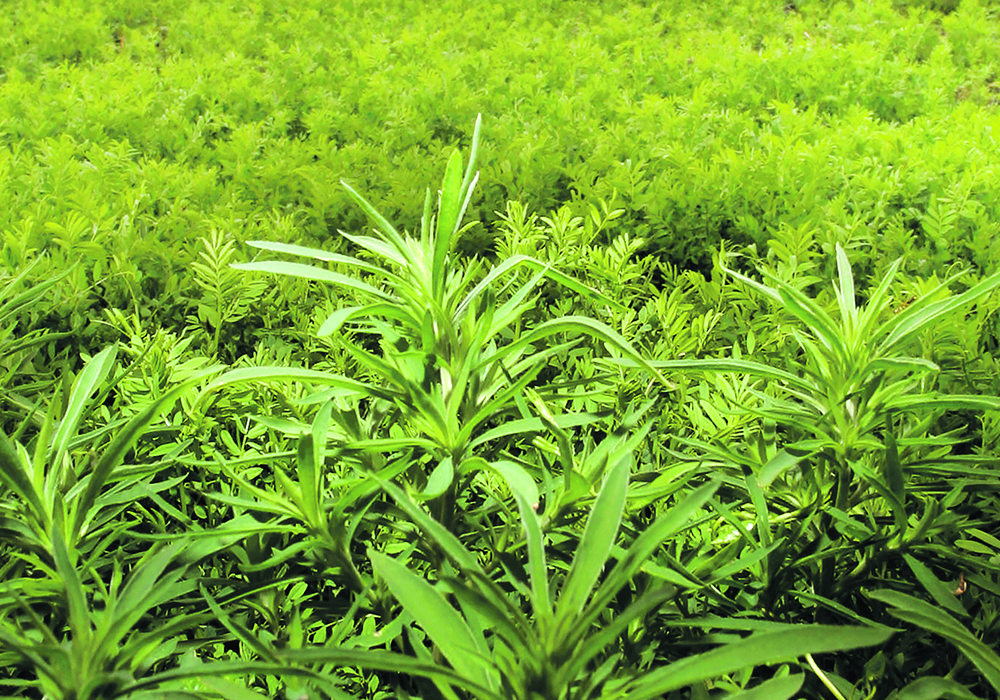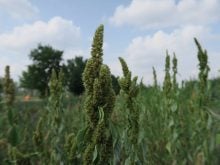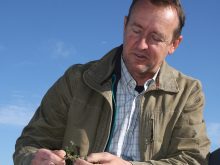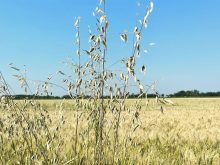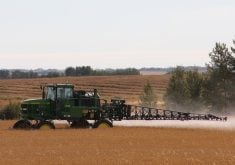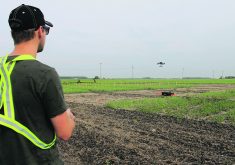Preliminary results from Saskatchewan indicate the weed may now have developed resistance to Group 14 herbicides
Kochia resistant to PPO inhibitors (Group 14) may have surfaced in Saskatchewan.
“This is completely preliminary, so, there’s other research that needs to happen to officially confirm PPO inhibitor-resistant kochia in the Prairies, but this isn’t overly surprising to me,” said Charles Geddes, research scientist in weed ecology and cropping systems at Agriculture Canada’s research station in Lethbridge.
Geddes provided a presentation during Saskatchewan’s Agronomy Research Update 2022, which was held in Saskatoon Dec. 13-14.
During the presentation he displayed an image of three kochia populations: two that are susceptible to Saflufenacil and a third that is likely resistant.
Each population was exposed to varying rates of the PPO inhibitor-based herbicide.
Saflufenacil worked on the first two populations, while the third population was able to withstand high rates.
“We do have plants that are surviving up to 16 times the field rate, the high field rate of saflufenacil.
“Based on these results, I expect that this is out there. This is maybe the scariest slide of the presentation.
“We do our routine diagnostics for Group 14 resistance with Saflufenacil because it makes sense for the way we screen our populations. But at this point we don’t know if this population is resistant to all Group 14 or just the one that we’ve screened with so far.
“We need to test with the other Group 14 (herbicides) moving forward to see if there’s cross resistance to others as well,” Geddes said.
He said Group 14 herbicides vary considerably in terms of how long they persist in the soil. Some Group 14 herbicides are essentially contact herbicides that need to be foliar applied, while others rely on residual control.
Amaranth species in Eastern Canada and the United States have developed Group 14 resistance to foliar applied products, but they are still susceptible to group 14 residual herbicides.
If confirmed, this will be the first report globally of kochia resistant to PPO inhibitors.
This kochia population was found in Saskatchewan in 2021and then submitted to Ag Canada for analysis, but the issue may be broader than Saskatchewan.
North Dakota State University recently said in a press release that kochia resistant to PPO inhibitors has also been found in North Dakota.
Geddes said most of the herbicide strategies used in response to glyphosate-resistant kochia just add a PPO inhibitor to the pre-plant burndown application.
“So, if you have glyphosate resistant, there’s still only one effective mode of action on those plants. So, it’s basically just taking the selection pressure that we had for glyphosate-resistant kochia and now applying it to the Group 14 in that mixture,” Geddes said.
Kochia has quickly developed resistance to multiple herbicides commonly used in Canada.
Acetolactate synthase inhibitor (Group 2) resistant kochia was first documented on the prairies in 1988.
“Over the course of two decades that type of resistance has been bred among kochia populations to the point where we now consider essentially all kochia Group 2 resistant,” Geddes said.
In 2011, a glyphosate resistant kochia population was found south of Lethbridge, making it the first glyphosate resistant weed found in Western Canada.
“The survey the subsequent year, in 2012, found that four percent of the (kochia) populations sampled within Alberta were glyphosate resistant. Then that survey was repeated in 2017 showing an increase from four percent to 50 percent of the populations were glyphosate resistant,” Geddes said.
In addition to glyphosate resistance, the 2012 survey also found 18 percent of samples had dicamba resistance and 13 percent had fluroxypyr resistance.
Dicamba and fluroxypyr are synthetic auxin herbicides (Group 4), but from different chemical families.
“We also repeated the (Alberta) survey in 2021 and found that 78 percent of the populations were glyphosate resistant, 28 percent were dicamba resistant and 44 percent were fluroxypyr resistant,” Geddes said.
“When we combine it all together, 45 percent of the populations that were sampled in the province were triple-resistant to Group 2, Group 9 which is glyphosate, and then Group 4 to at least one of the group four active ingredients.”
He said that when it comes to synthetic auxin herbicides (Group 4), resistance to one of the chemistries in this group does not necessarily mean the weed population will have resistance to the other chemistries in the group.
In Saskatchewan, Shaun Sharpe of Agriculture Canada collected kochia samples in 2019, and Geddes said glyphosate resistance was found in 87 percent of these plants.
“At this point, if you’re dealing with kochia (in Saskatchewan), it’s safe to assume it’s probably glyphosate resistant. Again, about half of those (kochia plants) having moderate to high resistance (to glyphosate), similar to what we observed in Alberta,” Geddes said.
The Saskatchewan survey found dicamba resistance in 45 percent of surveyed kochia plants with the majority having low-level resistance, similar to what was observed in Alberta.
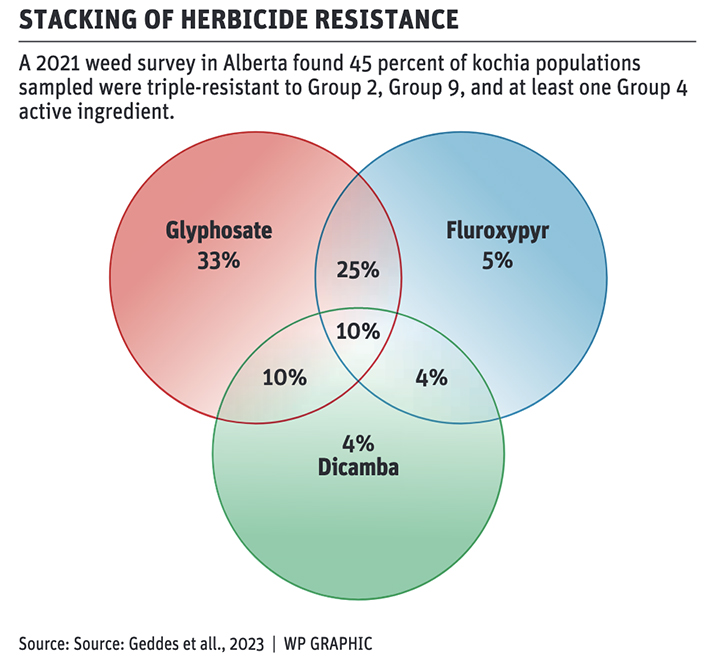
“So overall, both glyphosate and synthetic auxin resistance are present in the province (Saskatchewan) and having quite a bit of an impact. Dicamba resistance, because it’s low level, is likely to increase with continued use of that particular active ingredient,” Geddes said.
In Manitoba, the most recent survey was completed in 2018, and it showed glyphosate-resistant kochia increased from one percent of the fields in 2013 to 58 percent in 2018.
Dicamba resistance was found in one percent of kochia populations in the Manitoba fields that were surveyed.
Geddes said the discovery of kochia resistant to PPO inhibitors could potentially have a large impact on farmers.
“Especially if we’re talking about multiple herbicide resistance or stacking of herbicide resistance traits in weed populations. As herbicide resistance progresses that tends to be the issue,” Geddes said.
“The biggest impact that I foresee is going to be pre-planned burned down applications, especially in either no till or min till production systems.”
There are already kochia populations resistant to acetolactate synthase inhibitor (Group 2), synthetic auxin herbicides (Group 4) and glyphosate (Group 9), and if these populations also take on resistant to PPO inhibitors (Group 14), there will be few control options left for producers.
Geddes said integrated weed management strategies can slow the spread of herbicide resistant weeds and prevent them from emerging in the first place.


